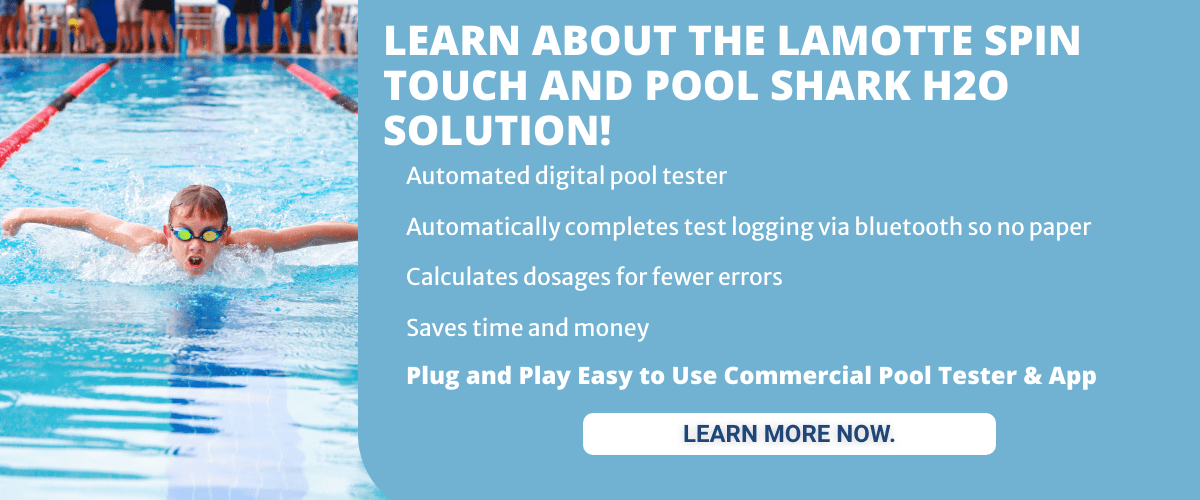Like you, we share the belief that swimming pools, splash pads, and hot tubs are essential community assets. They provide fun, fitness, heat and even stress relief, but they can also become sources of recreational water illnesses (RWIs) if not properly managed. For pool owners, operators, and managers, preventing RWIs is a health responsibility and a business necessity that protects your patrons, your reputation, and your bottom line.

Ahead, we outline the risks, the economic burden, and the critical prevention measures every aquatic facility should prioritize.
Inside this Blog:
- Why Recreational Water Illnesses matter for pool operators
- Your role in recreational water illness prevention
- How going beyond meeting compliance standards builds community and guest trust
- Bridging the gap between risk and readiness
- Final takeaways
Why Recreational Water Illnesses Matter for Operators
Recreational water illnesses are caused by germs (like Cryptosporidium, Pseudomonas, Giardia, norovirus, or Legionella) or by chemical exposure in pools, spas, splash pads, and natural water venues. Patrons can get sick from swallowing contaminated water, breathing in aerosols or steam, or having direct skin contact.
For commercial and public operators, RWIs create two pressing challenges:
- Health & Safety Risks: Outbreaks lead to sick patrons, hospitalizations, and in some cases, severe complications, particularly for children, older adults, and those with weakened immune systems. According to the CDC, Crypto can survive more than a week in a properly chlorinated pool, making it especially difficult to control without proper response plans.
- Economic & Reputational Costs: In a recent letter, the EPA highlighted the staggering financial toll of waterborne illness. Their analysis estimated $2.9 billion annually from recreational exposures alone, including direct medical expenses and indirect costs like missed workdays.
For operators, that translates into liability risk, potential closures, loss of public trust, and negative media coverage that can take seasons to recover from.
Simply put: prevention protects both people and business continuity.
The Operator’s Role in Recreational Water Illness Prevention
The CDC makes clear that preventing RWIs is a shared responsibility, but as pool operators, you’re on the front lines. Patrons can be reminded not to swim when sick, but the real impact comes from operational practices: water chemistry, facility design, staff training, and crisis management.
Here’s what that looks like in practice:
- Maintain Proper Water Quality
- Disinfectant Levels: Keep chlorine (1–3 ppm for pools; 3–10 ppm for hot tubs) or bromine within CDC-recommended ranges. Test frequently: at least twice daily for low-use pools and every 2–4 hours for busy pools or spas.
- pH Control: Maintain pH between 7.2–7.8. Even small fluctuations reduce chlorine’s effectiveness and increase risk of skin, eye, and respiratory irritation.
- Stabilizer (CYA) levels: Test stabilizer often and keep levels as close to 40ppm and below 90ppm. Increased levels reduce chlorine’s ability to disinfect water. Stabilizer and stabilized chlorine should never be used in indoor pools.
- Filtration & Circulation: Ensure systems run continuously, with regular backwashing and filter replacement to maintain clarity and reduce pathogen load.
- Rapid Response to Contamination Events
- Accident Protocols: Fecal incidents, vomit, or blood in the pool require immediate response–usually closure and hyperchlorination per CDC’s guidelines. Train staff on protocols and ensure signage is available for quick communication.
- Crypto-Specific Plans: Because Crypto is chlorine-resistant, standard disinfection won’t suffice. The CDC recommends hyperchlorination procedures that operators should have rehearsed before an outbreak happens.
- Facility & Equipment Standards
- Drain Covers: Inspect regularly for compliance with the Virginia Graeme Baker Pool & Spa Safety Act to prevent entrapments.
- Splash Pads: Pay particular attention as these high-use, no-standing-water attractions can spread RWIs quickly if filtration and UV disinfection are not optimized.
- Hot Tubs: Maintain higher disinfectant levels and monitor temperature (greater or equal to 104°F). Legionella risk increases with inadequate circulation and poor chemical balance.
- Staff Training & Communication
- Operator Certification: Keep at least one Certified Pool/Spa Operator (CPO) on staff and ensure they conduct ongoing training for other pool staff members.
- Recordkeeping: Document water testing, incidents, and corrective actions. These records are invaluable for inspections and liability protection.
- Public Signage: Post “Healthy Swimming” reminders in locker rooms and deck areas (including shower before entering, don’t swim when sick). If you need ready-to-print files, the CDC provides free materials for facilities.
- Proactive Patron Engagement
- Encourage showering before swimming. This is a simple step that removes sweat, lotions, and contaminants that deplete chlorine.
- Require frequent bathroom breaks for children; provide diaper-changing stations away from water play areas.
- Establish clear policies on when patrons can return after diarrheal illness (at least two weeks for Crypto cases).
Building Public Confidence by Going Beyond Compliance
While health codes establish minimum standards, going beyond compliance builds trust. Parents and community members notice when your facility emphasizes cleanliness and safety. That trust translates into repeat visits, positive reviews, and fewer costly closures.
Some best practices that elevate your facility:
- Public Posting of Water Quality: Share disinfectant and pH readings on a whiteboard or digital display.
- Use of Secondary Disinfection: Add UV or ozone systems helps inactivate chlorine-resistant pathogens.
- Community Education Campaigns: Partner with local health departments to raise awareness about safe swimming habits. Your social media channels and email newsletters are another great place to share about healthy practices, facts, and requirements.
Bridging the Gap Between Risk and Readiness
The EPA emphasizes that many cases of recreational waterborne illness are underreported. For pool operators, this means that problems can be brewing even without official outbreak reports. The best defense is a strong offense:
- Adopt the CDC’s Model Aquatic Health Code (MAHC): Though voluntary, it’s the gold standard for aquatic facility operation and design.
- Audit Your Systems: Schedule regular internal audits to identify gaps in monitoring, maintenance, or staff readiness.
- Plan for Emergencies: Have a communication plan in place for notifying patrons, health departments, and media if contamination or an outbreak occurs.
Key Takeaways for Operators
- RWIs pose real health, financial, and reputational risks.
- Proper chemical balance, disinfection, and equipment maintenance are non-negotiable.
- Staff training and incident protocols are critical to outbreak prevention and management.
- Going beyond compliance—through transparency, secondary disinfection, and patron education—builds community trust and resilience.
Operating a pool, hot tub, or water playground comes with significant responsibility. RWIs are common, costly, and often preventable. By combining strict adherence to water quality management with proactive communication and preparedness, you can protect your communities—and your business—from the hidden costs of waterborne illness.
The Pool Shark H2O app makes it quick and simple to test water and adjust chemicals with a high degree of accuracy. It automatically performs complex pool chemical math equations for you, eliminating guesswork and forgery risk.
Online access allows for auditing pool logs for safety and compliance across multiple facilities remotely. Pool managers can receive automated alerts when pools need attention or tests are missed, reducing your number of physical visits to your pools while ensuring pool water is safe, maintained, and 100% Health Department compliant. ]



